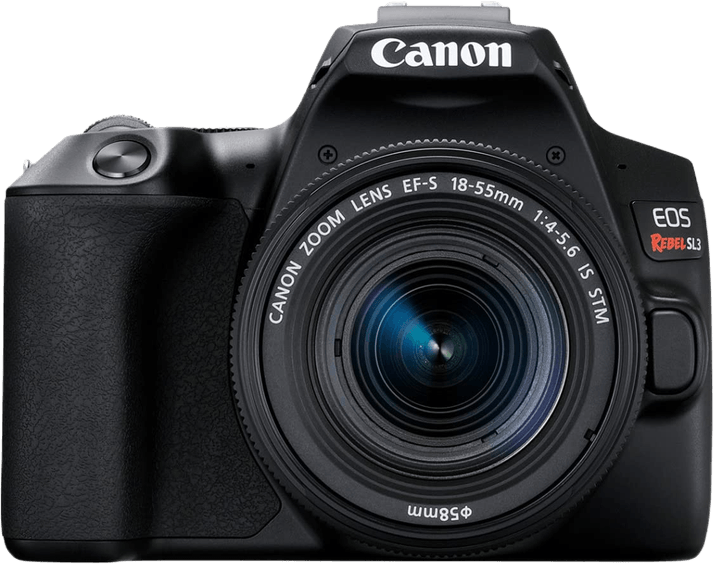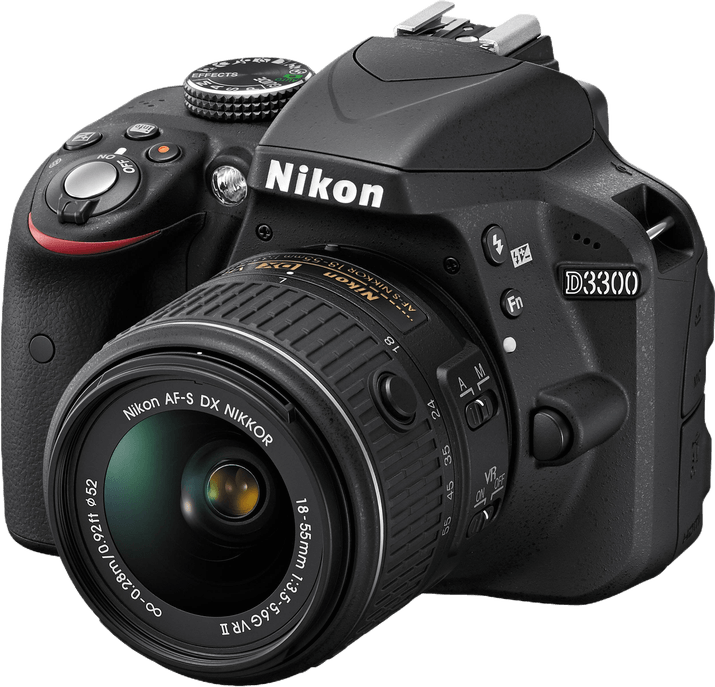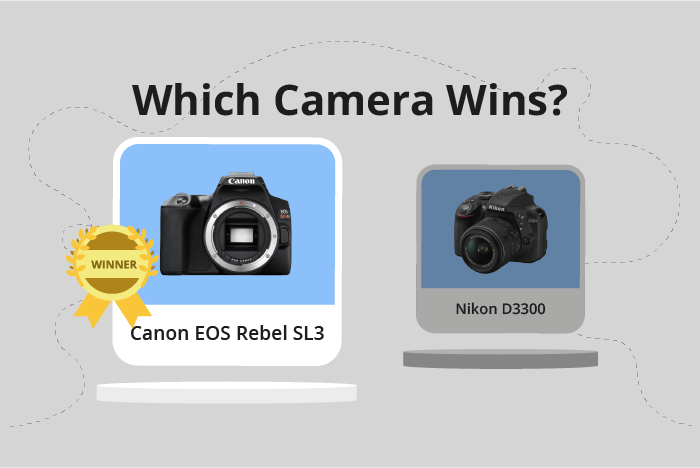Canon Rebel EOS SL3 / 250D vs Nikon D3300 Comparison
Canon EOS Rebel SL3 / 250D

Nikon D3300

The Canon Rebel EOS SL3 / 250D outperforms the Nikon D3300 with a score of 63/100 compared to 55/100. Both cameras are DSLRs and share similar sizes and weights, with the SL3 measuring 122 x 93 x 70mm and weighing 449g, while the D3300 measures 124 x 98 x 76mm and weighs 430g.
The Canon SL3 has the advantage of being a newer model, released in 2019, and offers a lower launch price of $599 compared to the Nikon D3300’s $650 launch price in 2014. This makes the SL3 more cost-effective and up-to-date. However, the Nikon D3300 is slightly lighter, which could be a benefit for those who prioritize portability.
Considering the higher score, lower price, and more recent release, the Canon Rebel EOS SL3 / 250D is the superior choice for most users. The Nikon D3300 may still appeal to those seeking a lighter camera, but overall, the SL3 offers better value and performance.
Canon Rebel EOS SL3 / 250D vs Nikon D3300 Overview and Optics
The Nikon D3300 wins in the optics comparison with a score of 64/100, while the Canon Rebel EOS SL3 / 250D scores 61/100. Both cameras share some common specifications, such as 24 and 24.2 megapixels, 5 fps shooting speed, CMOS sensor type, APS-C sensor size, and compatibility with their respective lens mounts (Canon EF/EF-S and Nikon F DX).
The Nikon D3300 excels with a higher DXOMARK score for its sensor at 82, compared to the Canon SL3’s 64. This higher score means the Nikon D3300’s sensor provides better image quality and low-light performance. Additionally, the D3300’s Expeed 4 processor contributes to faster image processing and improved noise reduction.
On the other hand, the Canon SL3 has image stabilization, which the Nikon D3300 lacks. This feature helps reduce camera shake, resulting in sharper images, especially in low-light conditions or when using telephoto lenses. The Canon SL3 also boasts a newer Digic 8 processor, providing improved performance and better image quality compared to older processors.
Taking these factors into account, the Nikon D3300 has a slight edge in image quality due to its higher DXOMARK sensor score and Expeed 4 processor. However, the Canon SL3 offers the advantage of image stabilization and a newer processor. Ultimately, the choice between these two cameras depends on the user’s priorities and preferences. If image quality is the primary concern, the Nikon D3300 is the better option. However, if image stabilization is a crucial feature, the Canon SL3 is the camera to choose.
Canon Rebel EOS SL3 / 250D vs Nikon D3300 Video Performance
The Canon Rebel EOS SL3 / 250D outperforms the Nikon D3300 in video capabilities with a score of 83/100 compared to the Nikon’s 56/100. Both cameras share some common specifications, such as the maximum video frame rate of 60fps. However, there are significant differences in other aspects that make the Canon SL3 / 250D a superior choice for video recording.
The most notable advantage of the Canon SL3 / 250D is its maximum video resolution of 4K (3840 x 2160), which is a considerable improvement over the Nikon D3300’s Full HD (1920 x 1080) resolution. This higher resolution allows the Canon to capture more detail and produce higher quality videos.
Another advantage of the Canon SL3 / 250D is its built-in time-lapse functionality. This feature enables users to create stunning time-lapse videos without the need for additional equipment or software, making it a more versatile option for videographers.
The Nikon D3300 does not offer any significant advantages in video capabilities over the Canon SL3 / 250D. Its lower video resolution and lack of time-lapse functionality put it at a disadvantage in this comparison.
Taking these factors into account, the Canon Rebel EOS SL3 / 250D is the clear winner when it comes to video capabilities. Its higher video resolution and built-in time-lapse functionality make it a more suitable choice for those looking to capture high-quality videos. On the other hand, the Nikon D3300 falls short in this area and is not the ideal choice for videographers.
Canon Rebel EOS SL3 / 250D vs Nikon D3300 Features and Benefits
The Canon Rebel EOS SL3 / 250D outperforms the Nikon D3300 in features with a score of 70/100 compared to the Nikon’s 41/100. Both cameras have a 3-inch screen and do not offer GPS functionality. However, the Canon SL3 / 250D boasts superior features in several aspects.
The Canon SL3 / 250D has a higher screen resolution of 1,040,000 dots, while the Nikon D3300 has 921,000 dots. This difference in screen resolution provides a clearer and sharper image on the Canon camera. Additionally, the Canon SL3 / 250D has a touchscreen, making it more user-friendly and allowing for easier navigation through settings and features.
Furthermore, the Canon SL3 / 250D has a flip screen, which is absent in the Nikon D3300. This feature allows for more versatile shooting angles and easier framing of subjects. Moreover, the Canon SL3 / 250D has both WIFI and Bluetooth capabilities, enabling wireless connectivity and convenient sharing of images. The Nikon D3300 lacks these connectivity features.
On the other hand, the Nikon D3300 does not have any distinct advantages over the Canon SL3 / 250D in terms of features. It falls short in comparison, lacking the touchscreen, flip screen, WIFI, and Bluetooth capabilities that the Canon camera possesses.
Taking these points into account, the Canon Rebel EOS SL3 / 250D is the clear winner in terms of features. The higher feature score reflects the superior capabilities and user-friendly design of the Canon camera. The Nikon D3300, with its lower score, does not offer any significant advantages in this regard.
Canon Rebel EOS SL3 / 250D vs Nikon D3300 Storage and Battery
The Canon Rebel EOS SL3 / 250D outperforms the Nikon D3300 in storage and battery with a score of 45/100, compared to the Nikon’s 32/100. Both cameras share common specifications, including one memory card slot and compatibility with SD, SDHC, and SDXC memory cards. Neither camera offers USB charging.
The Canon SL3 / 250D excels with its longer battery life of 1070 shots and utilizes the LP-E17 battery type. In contrast, the Nikon D3300 provides 700 shots with its EN-EL14a battery. This difference makes the Canon SL3 / 250D a more reliable option for extended shooting sessions.
However, the Nikon D3300 does not have any advantages in storage and battery compared to the Canon SL3 / 250D. The Canon camera is the clear winner in this aspect, offering better battery life for photographers who require longer shooting times without frequent battery replacement.
Alternatives to the Canon Rebel EOS SL3 / 250D and Nikon D3300
Are you still undecided about which camera is right for you? Have a look at these popular comparisons that feature the Canon Rebel EOS SL3 / 250D or the Nikon D3300:

